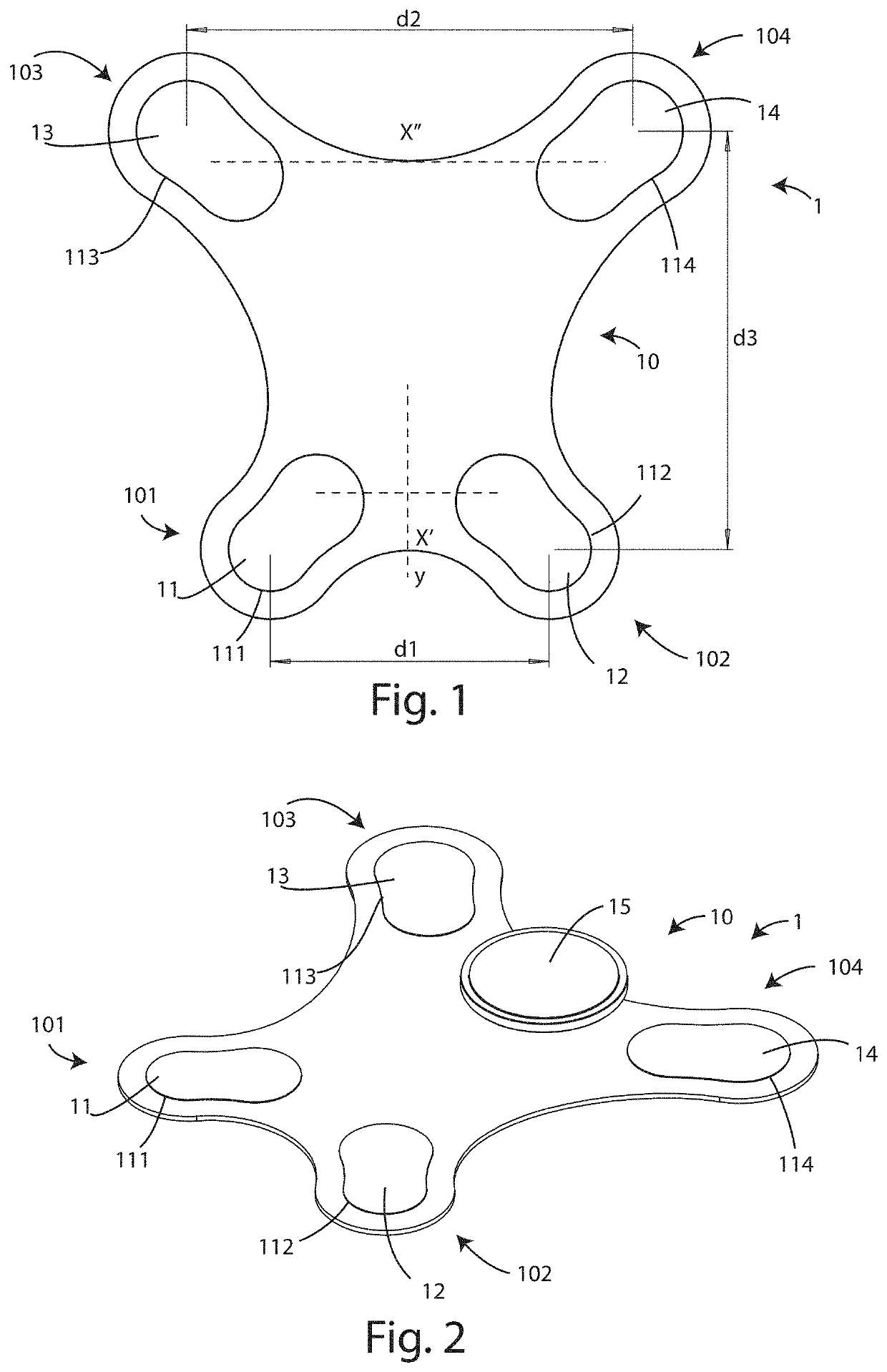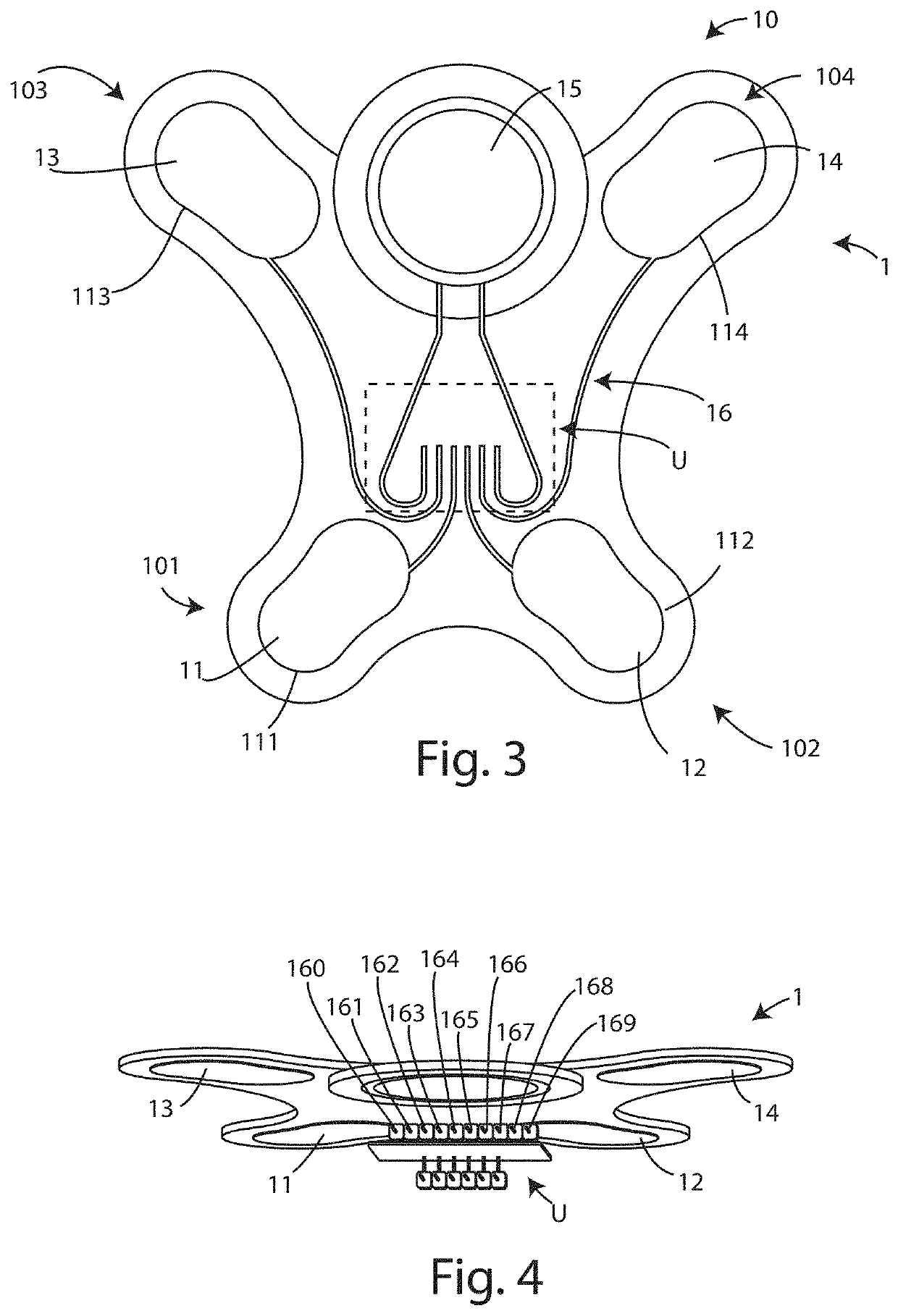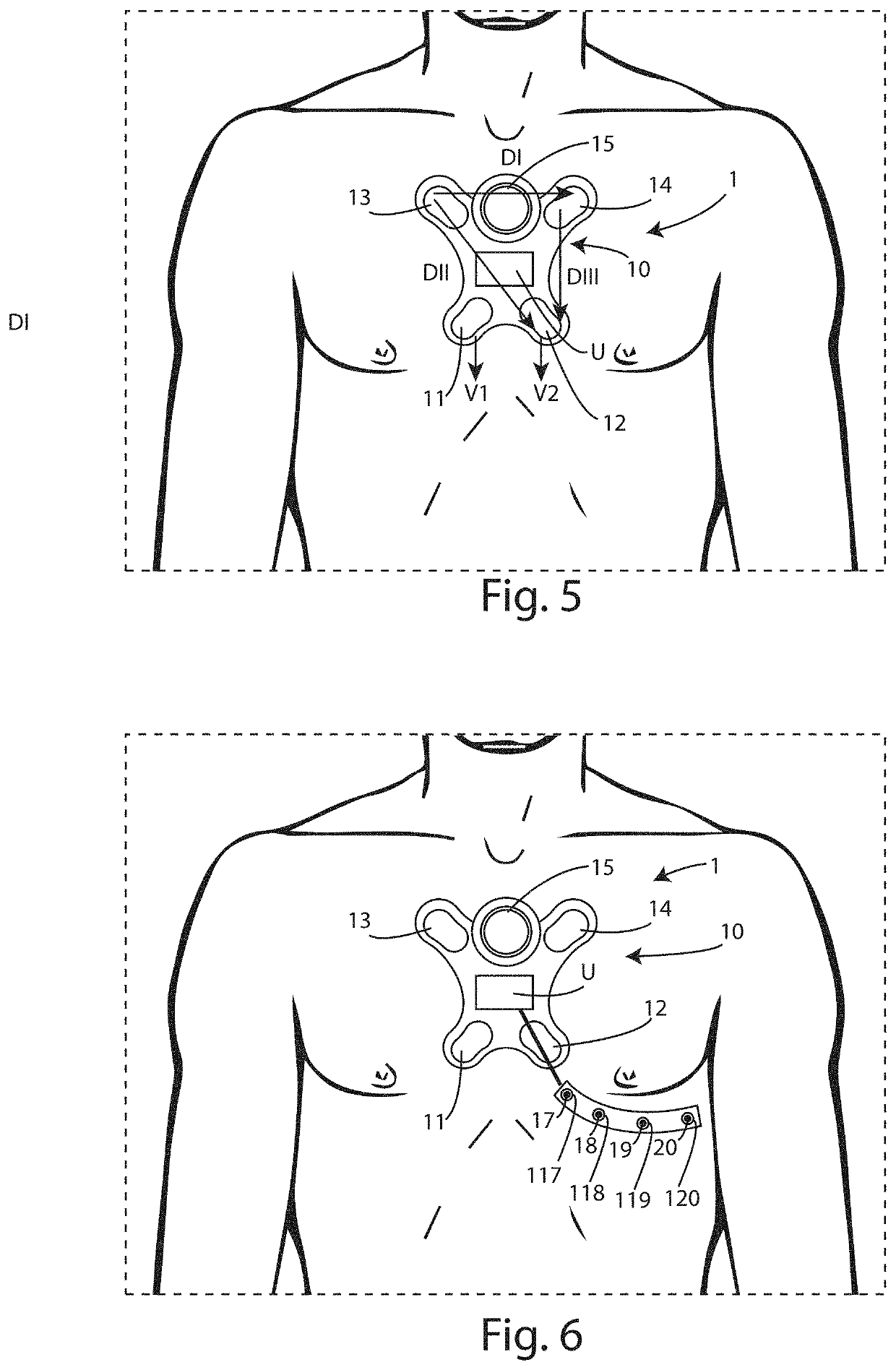Wearable device for the detection of cardiac signals, a system comprising said device and a relative method of operation
a wearable device and cardiac signal technology, applied in the field of wearable devices for detecting cardiac signals, can solve the problems of limiting the number, non-diagnosis of acute ischaemic events/myocardial infarctions, and the inability to calculate any of the three bipolar leads di-diii or any of the unipolar precordial wilson leads vb>1/b>-vb>6/b>, so as
- Summary
- Abstract
- Description
- Claims
- Application Information
AI Technical Summary
Benefits of technology
Problems solved by technology
Method used
Image
Examples
Embodiment Construction
[0110]With particular reference to FIGS. 1-5, reference numeral 1 denotes a device for detecting cardiac electrical signals according to the invention.
[0111]In particular, the detection device 1 is configured to detect at least five leads of the cardiac electrical dipole vector, including three bipolar leads DI′, DII′, DIII′ and two unipolar leads V1′, V2′, by means of four electrodes 11, 12, 13, 14, as described below.
[0112]Preferably, the detection device 1 is configured to detect eight leads of the cardiac electrical dipole vector, comprising the five leads described above plus three augmented leads of the limbs aVR′, aVF′, aVL′.
[0113]Moreover, the detection device 1 can be integrated inside a system 100 comprising a data receiving device 2, preferably remotely accessible and configured to interact with further peripheral units, as described below.
[0114]In particular, the detection device 1 comprises a supporting element 10 for structural support of the device 1, comprising:
[0115...
PUM
 Login to View More
Login to View More Abstract
Description
Claims
Application Information
 Login to View More
Login to View More - Generate Ideas
- Intellectual Property
- Life Sciences
- Materials
- Tech Scout
- Unparalleled Data Quality
- Higher Quality Content
- 60% Fewer Hallucinations
Browse by: Latest US Patents, China's latest patents, Technical Efficacy Thesaurus, Application Domain, Technology Topic, Popular Technical Reports.
© 2025 PatSnap. All rights reserved.Legal|Privacy policy|Modern Slavery Act Transparency Statement|Sitemap|About US| Contact US: help@patsnap.com



